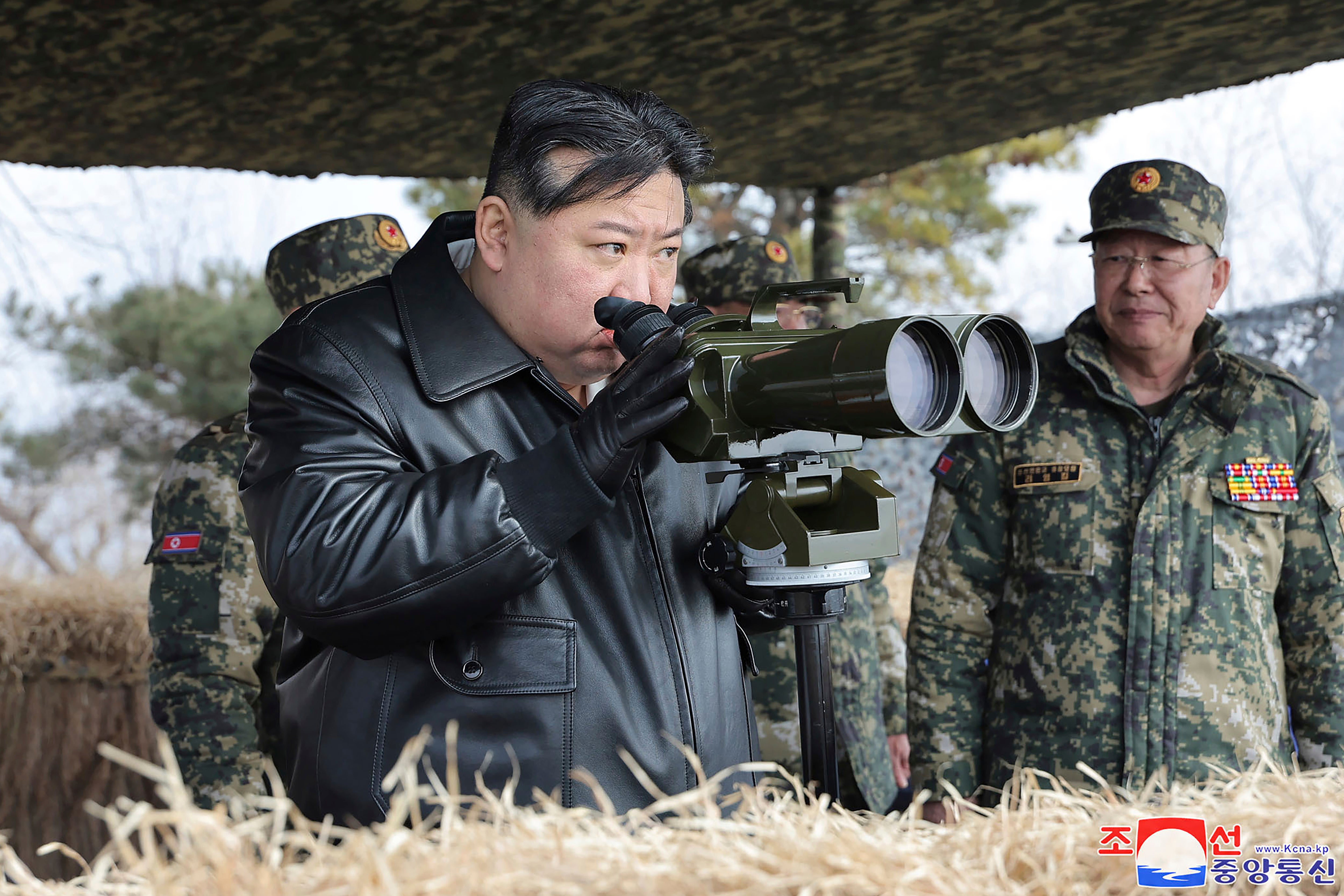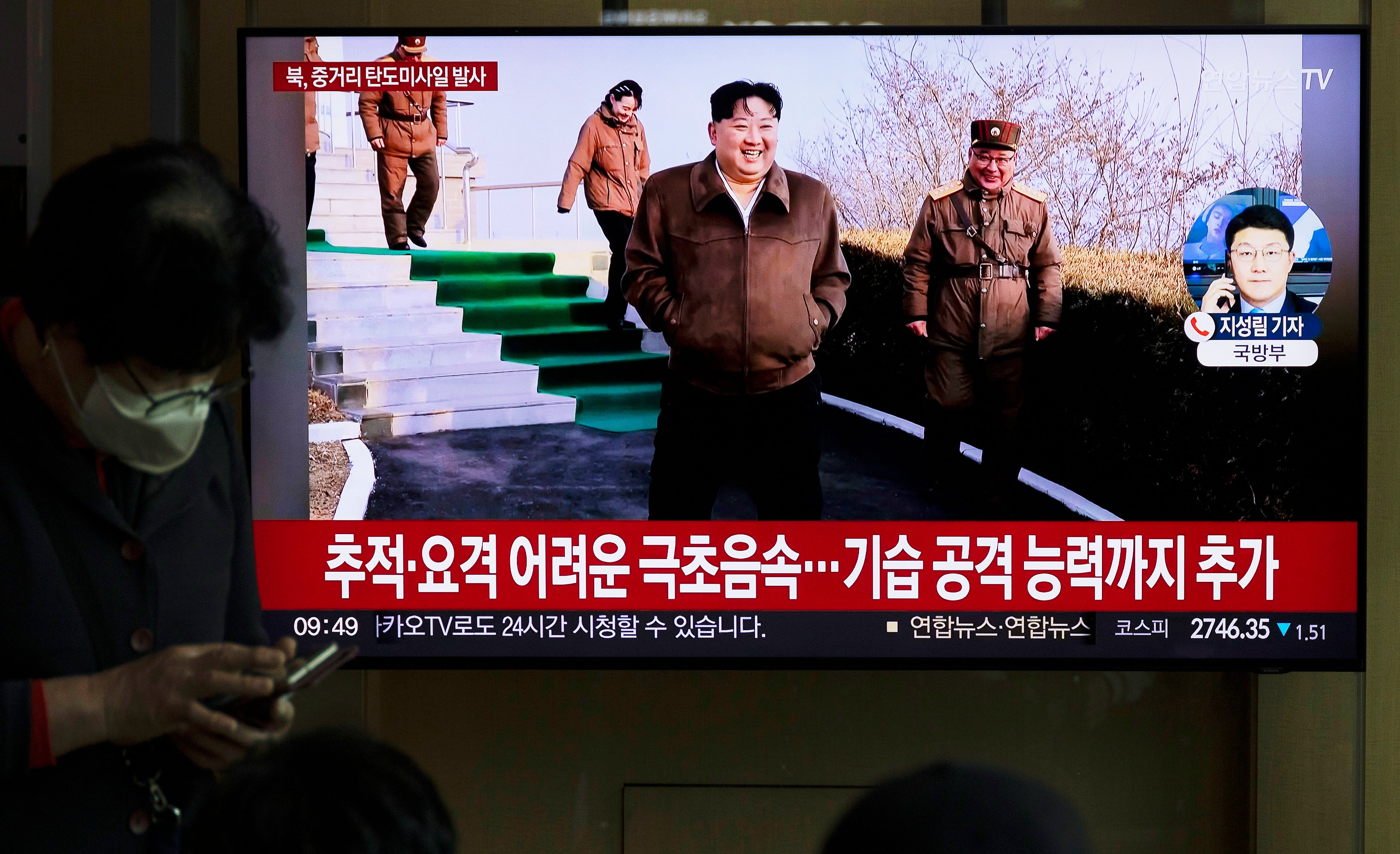North Korea says it tested new missile with hypersonic warhead
North Korea continues to expand its nuclear and missile programme in the face of deepening tensions with neighbours and the United States

Your support helps us to tell the story
From reproductive rights to climate change to Big Tech, The Independent is on the ground when the story is developing. Whether it's investigating the financials of Elon Musk's pro-Trump PAC or producing our latest documentary, 'The A Word', which shines a light on the American women fighting for reproductive rights, we know how important it is to parse out the facts from the messaging.
At such a critical moment in US history, we need reporters on the ground. Your donation allows us to keep sending journalists to speak to both sides of the story.
The Independent is trusted by Americans across the entire political spectrum. And unlike many other quality news outlets, we choose not to lock Americans out of our reporting and analysis with paywalls. We believe quality journalism should be available to everyone, paid for by those who can afford it.
Your support makes all the difference.North Korea said it tested another new hypersonic intermediate-range missile powered with solid propellants as it continues to expand its nuclear and missile programme in the face of deepening tensions with neighbours and the United States.
The report by North Korean state media came a day after the South Korean and Japanese militaries detected the North launching the missile from an inland area around its capital toward its eastern sea.
North Korean state media said the test was supervised by authoritarian leader Kim Jong Un, who described the missile – named Hwasong-16B – as a key piece of his nuclear war deterrent and vowed to further build up to counter his “enemies”, a reference to the United States, South Korea and Japan.
Kim claimed that the North has now developed nuclear-capable, solid-fuel systems for “all the tactical, operational and strategic missiles with various ranges”, the Korean Central News Agency said.
In recent years, North Korea has been focusing on developing more weapons with built-in solid propellants. Those weapons are easier to move and hide and can be made to launch quicker than liquid-propellant missiles, which need to be fuelled before launch and cannot stay fuelled for long periods.
The North has since 2021 also been testing hypersonic weapons designed to exceed five times the speed of sound. If perfected, such systems could potentially pose a challenge to regional missile defence systems because of their speed and manoeuvrability. However, it’s unclear whether the North’s hypersonic vehicles consistently maintained a desired speed exceeding Mach 5 during tests in 2021 and 2022.
During Tuesday’s test, the missile’s hypersonic glide warhead after being separated from the launch rocket reached a peak height of 101km (62 miles) and flew about 1,000km (621 miles) while performing various flight manoeuvres before landing in waters between the Korean Peninsula and Japan, the KCNA said. The South Korean and Japanese militaries had assessed that the missile flew around 600km (372 miles) although Japan’s Defence Ministry announced a similar apogee with the North Korean report.

The North had also tested a purported hypersonic IRBM in January, which came years after it flight-tested liquid-fuel IRBMs. Experts say such weapons, if perfected, are capable of reaching remote US targets in the Pacific, including the military hub of Guam.
Tensions in the region have risen since 2022 as Kim used Russia’s invasion of Ukraine as a distraction to accelerate his testing of missiles and other weapons. The United States and South Korea have responded by expanding their combined training and trilateral drills involving Japan and sharpening their deterrence strategies built around strategic US assets.
While supervising Tuesday’s test, Kim called for his country to further expand its nuclear and missile programme to acquire “overwhelming power capable of containing and controlling” his enemies, who have “recently run higher fever in boosting their military alliance and staging all sorts of war drills”.
Hours after the launch, Seoul’s Defence Ministry announced that South Korea, the United States and Japan conducted a combined aerial exercise above waters near Jeju island that involved at least one nuclear-capable US B-52 bomber.
The United States in recent months has been increasing its deployment of strategic assets to the region, also including aircraft carriers and missile-firing submarines, in a show of force against North Korea.